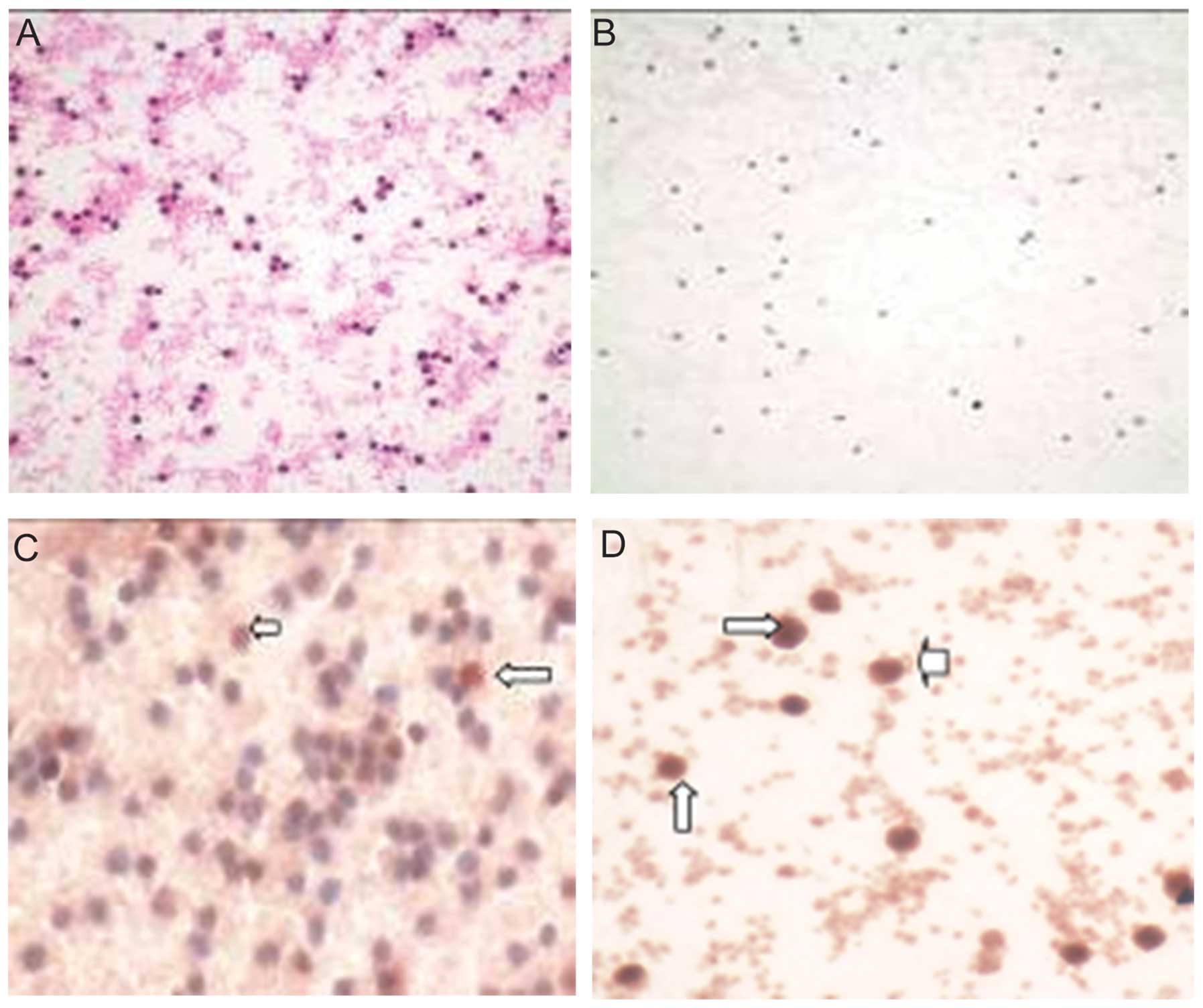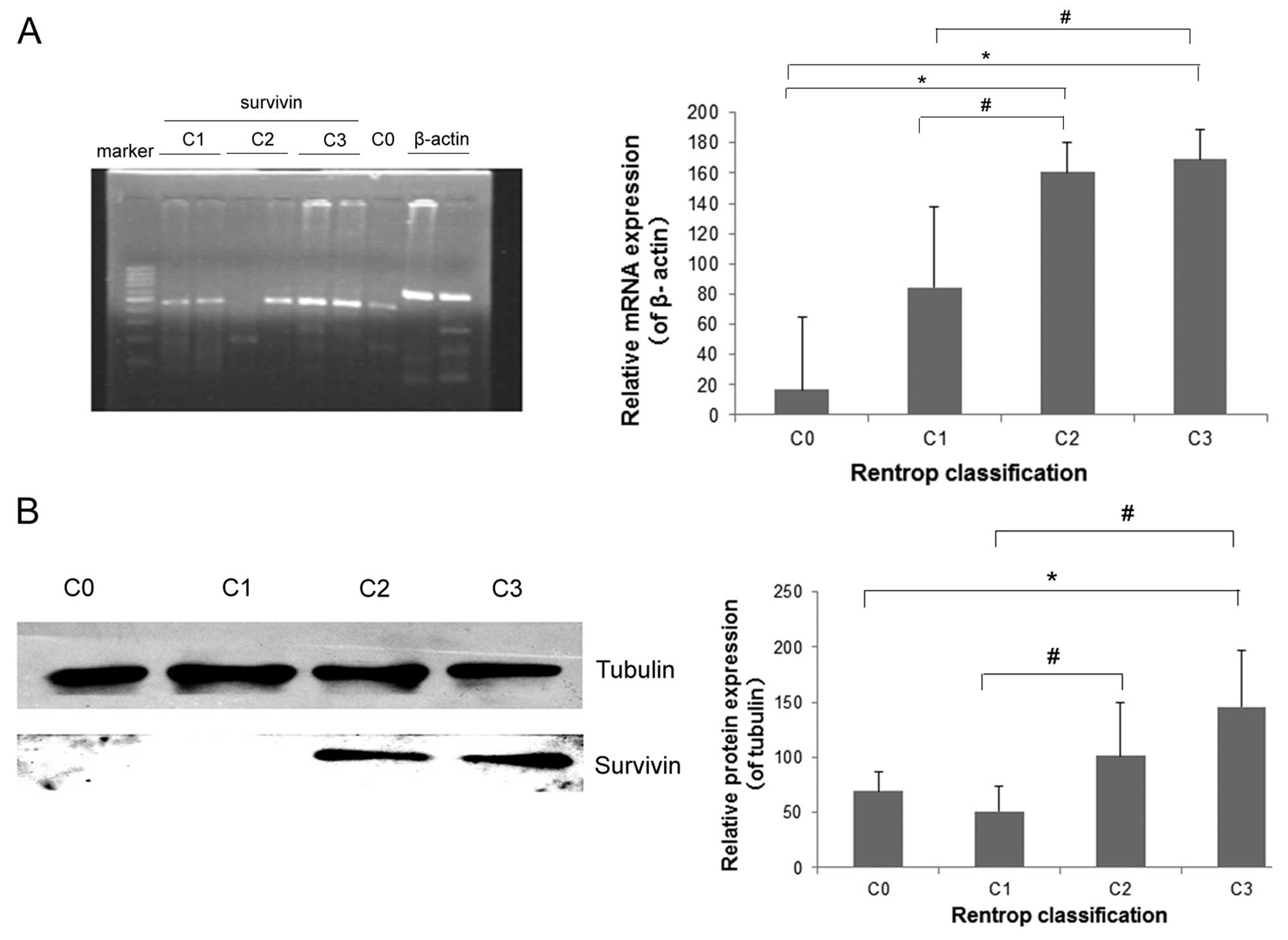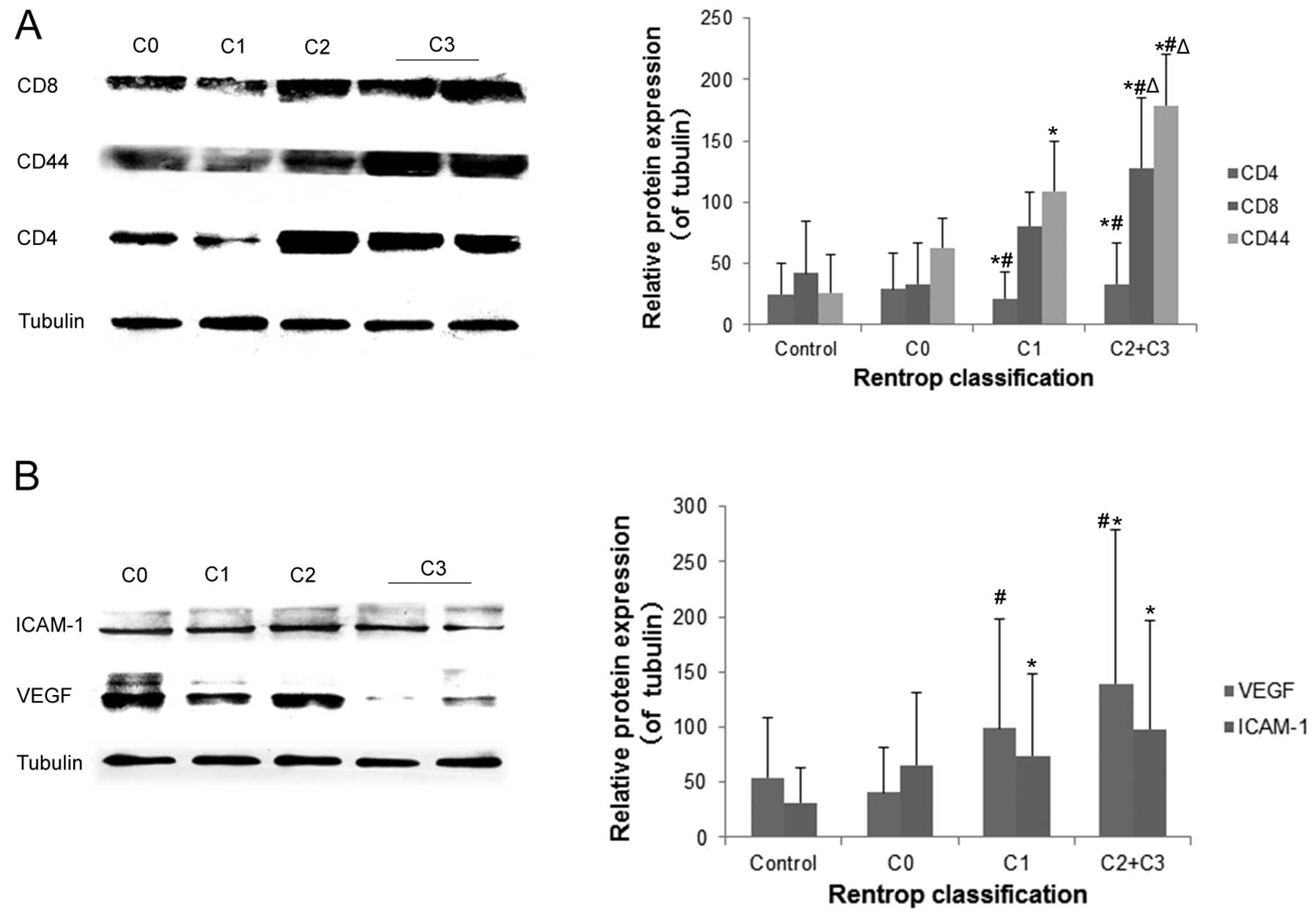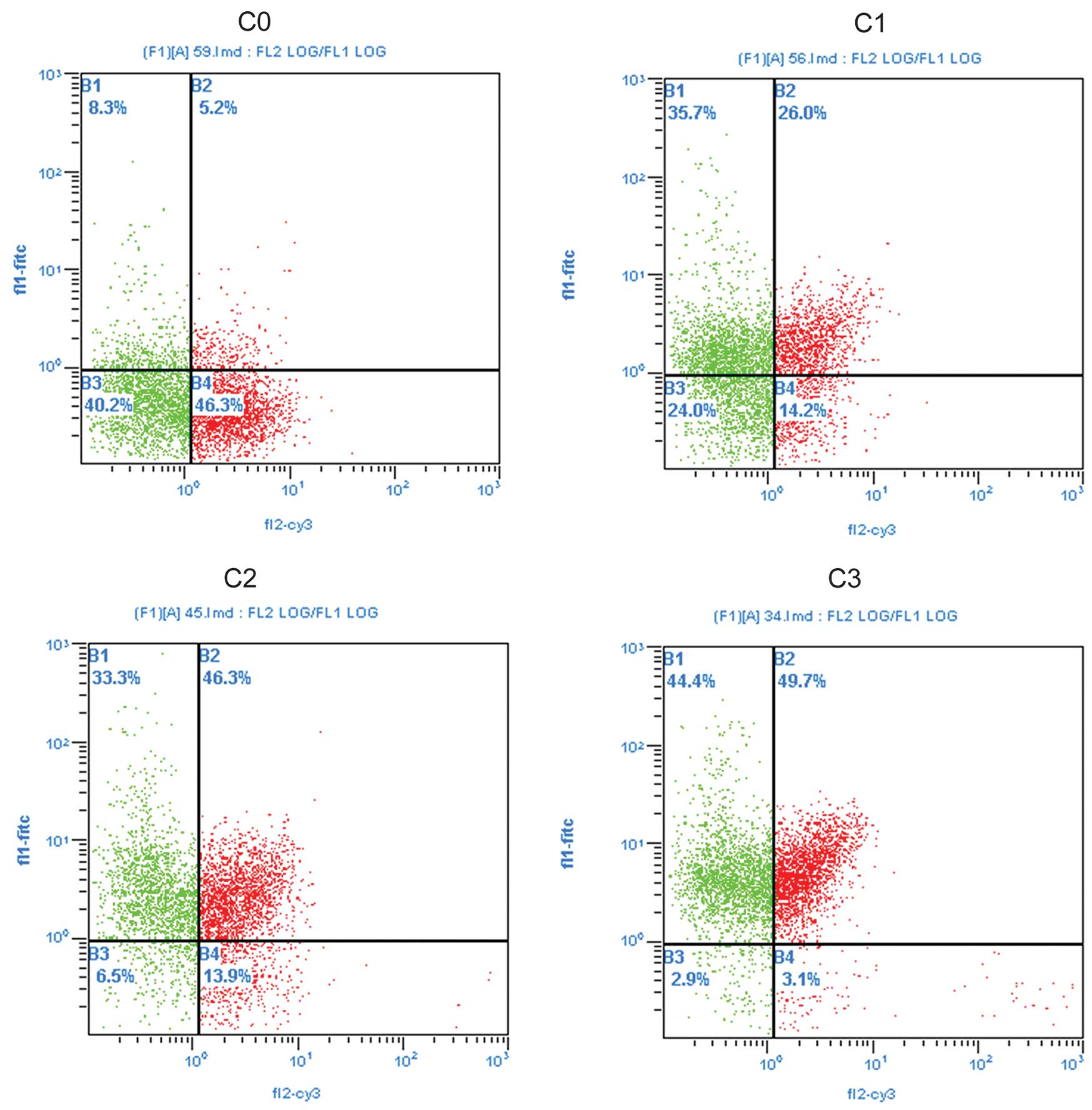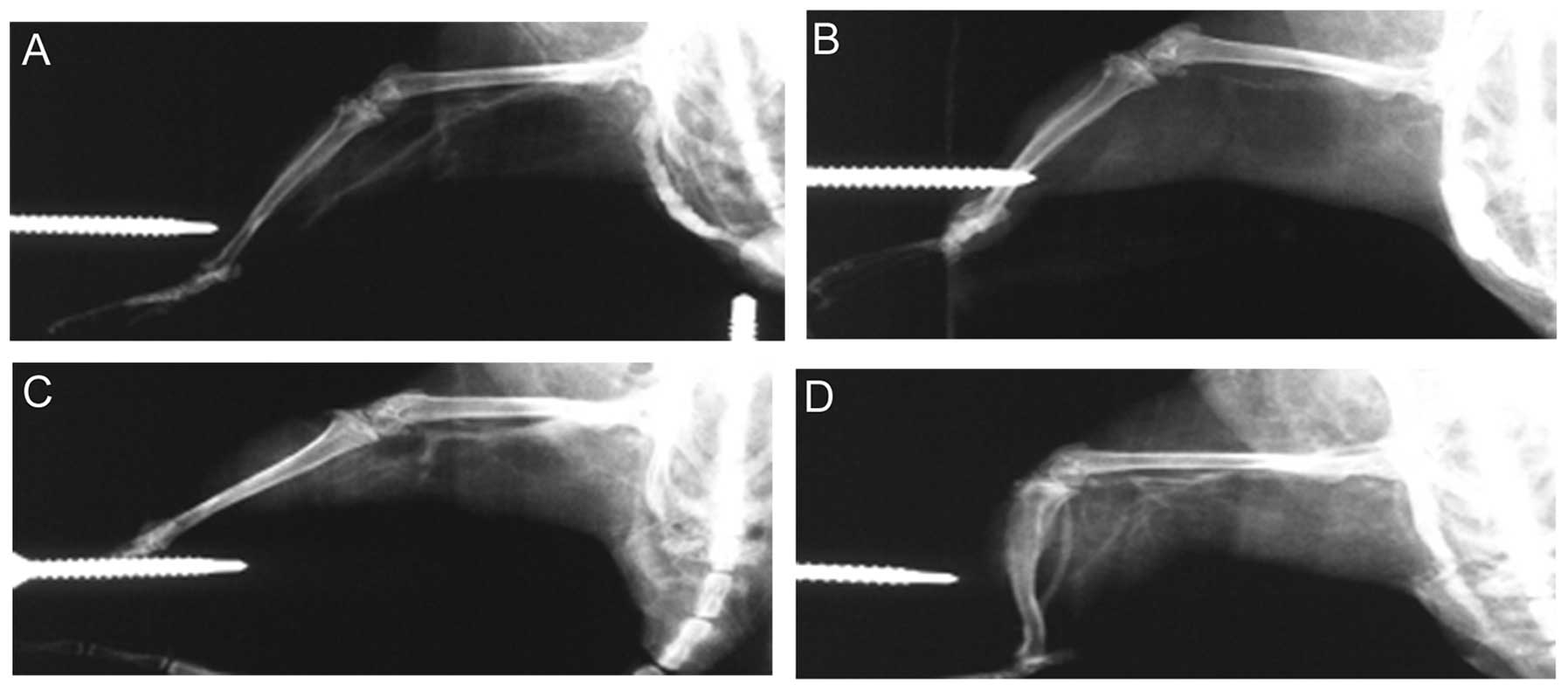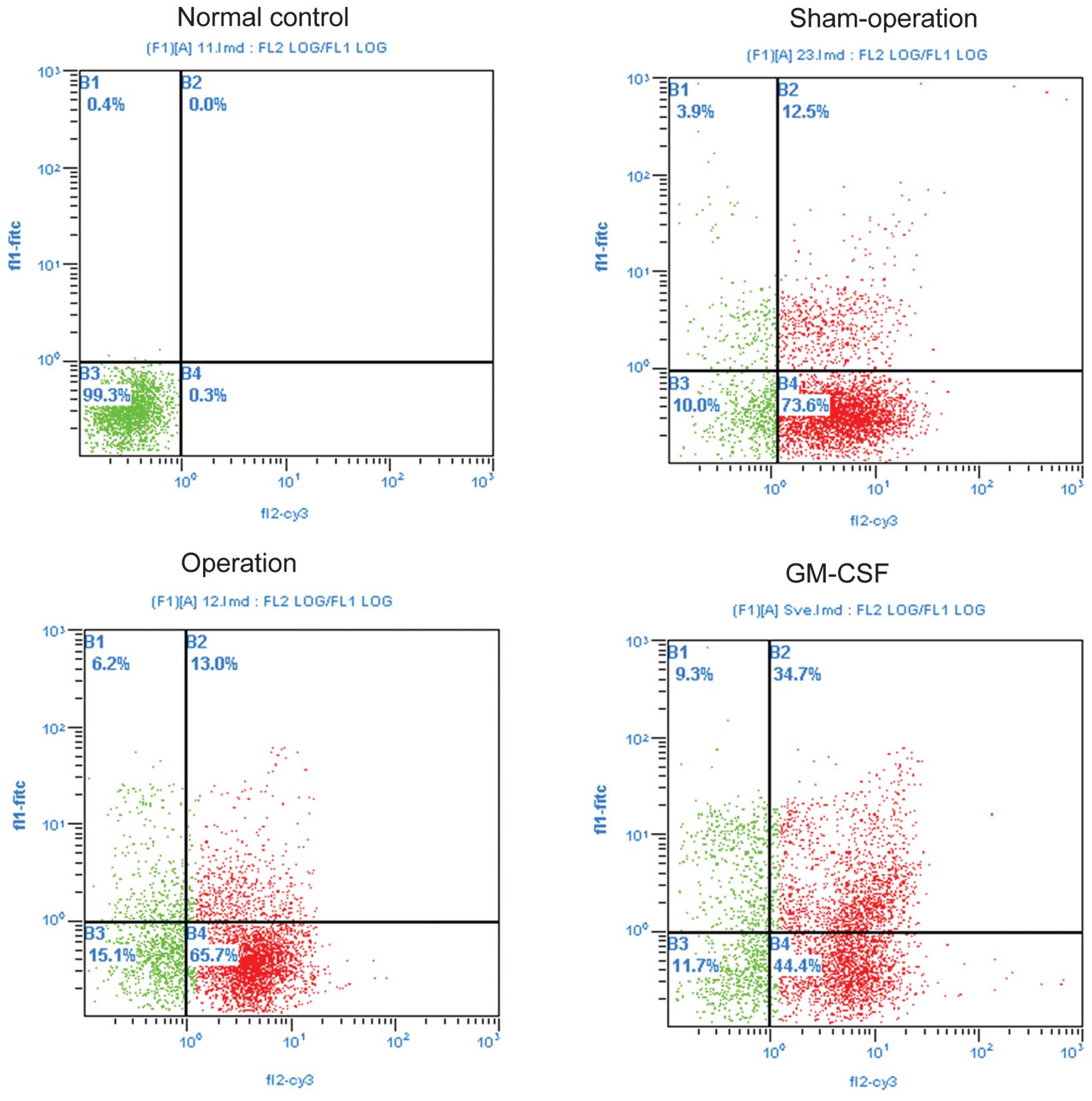|
1
|
Seiler C: The human coronary collateral
circulation. Heart. 89:1352–1357. 2003. View Article : Google Scholar : PubMed/NCBI
|
|
2
|
Fefer P, Knudtson ML, Cheema AN, et al:
Current perspectives on coronary chronic total occlusions: the
Canadian Multicenter Chronic Total Occlusions Registry. J Am Coll
Cardiol. 59:991–997. 2012. View Article : Google Scholar : PubMed/NCBI
|
|
3
|
Petronio AS, Baglini R, Limbruno U, et al:
Coronary collateral circulation behaviour and myocardial viability
in chronic total occlusion treated with coronary angioplasty. Eur
Heart J. 19:1681–1687. 1998. View Article : Google Scholar : PubMed/NCBI
|
|
4
|
Levkau B, Schäfers M, Wohlschlaeger J, et
al: Survivin determines cardiac function by controlling total
cardiomyocyte number. Circulation. 117:1583–1593. 2008. View Article : Google Scholar : PubMed/NCBI
|
|
5
|
Hoekstra M, van der Lans CA, Halvorsen B,
et al: The peripheral blood mononuclear cell microRNA signature of
coronary artery disease. Biochem Biophys Res Commun. 394:792–797.
2010. View Article : Google Scholar : PubMed/NCBI
|
|
6
|
Zhen HN, Zhang X, Hu PZ, et al: Survivin
expression and its relation with proliferation, apoptosis, and
angiogenesis in brain gliomas. Cancer. 104:2775–2783. 2005.
View Article : Google Scholar : PubMed/NCBI
|
|
7
|
O’Connor DS, Schechner JS, Adida C, et al:
Control of apoptosis during angiogenesis by survivin expression in
endothelial cells. Am J Pathol. 156:393–398. 2000. View Article : Google Scholar
|
|
8
|
Lee GH, Joo YE, Koh YS, et al: Expression
of survivin in gastric cancer and its relationship with tumor
angiogenesis. Eur J Gastroenterol Hepatol. 18:957–963. 2006.
View Article : Google Scholar : PubMed/NCBI
|
|
9
|
Zwerts F, Lupu F, De Vriese A, et al: Lack
of endothelial cell survivin causes embryonic defects in
angiogenesis, cardiogenesis, and neural tube closure. Blood.
109:4742–4752. 2007. View Article : Google Scholar : PubMed/NCBI
|
|
10
|
Waksman R, Saito S, Galassi AR and
Tomasello SD: Collateral circulation in CTO. Chronic Total
Occlusions: A Guide to Recanalization. Waksman R and Saito S: John
Wiley and Sons; Oxford:
|
|
11
|
Conway EM, Zwerts F, Van Eygen V, et al:
Survivin-dependent angiogenesis in ischemic brain: molecular
mechanisms of hypoxia-induced up-regulation. Am J Pathol.
163:935–946. 2003. View Article : Google Scholar : PubMed/NCBI
|
|
12
|
Cotton JM, Mathur A, Hong Y, Brown AS,
Martin JF and Erusalimsky JD: Acute rise of circulating vascular
endothelial growth factor-A in patients with coronary artery
disease following cardiothoracic surgery. Eur Heart J. 23:953–959.
2002. View Article : Google Scholar : PubMed/NCBI
|
|
13
|
Labarrere CA, Nelson DR, Miller SJ, et al:
Value of serum-soluble intercellular adhesion molecule-1 for the
noninvasive risk assessment of transplant coronary artery disease,
posttransplant ischemic events, and cardiac graft failure.
Circulation. 102:1549–1555. 2000. View Article : Google Scholar : PubMed/NCBI
|
|
14
|
Teeuwen K, Adriaenssens T, Van den Branden
BJ, et al: A randomized multicenter comparison of hybrid
sirolimus-eluting stents with bioresorbable polymer versus
everolimus-eluting stents with durable polymer in total coronary
occlusion: rationale and design of the Primary Stenting of Occluded
Native Coronary Arteries IV study. Trials. 13:2402012. View Article : Google Scholar
|
|
15
|
Rentrop KP, Cohen M, Blanke H and Phillips
RA: Changes in collateral channel filling immediately after
controlled coronary artery occlusion by an angioplasty balloon in
human subjects. J Am Coll Cardiol. 5:587–592. 1985. View Article : Google Scholar : PubMed/NCBI
|
|
16
|
Kato M, Shiode N, Yamagata T, Matsuura H
and Kajiyama G: Coronary segmental responses to acetylcholine and
bradykinin in patients with atherosclerotic risk factors. Am J
Cardiol. 80:751–755. 1997. View Article : Google Scholar : PubMed/NCBI
|
|
17
|
Xu YG, Zhou SH, Li YG, et al: The
mechanism underlying vascular smooth muscle cell apoptosis induced
by atorvastatin may be mainly associated with down-regulation of
survivin expression. Cardiovasc Drugs Ther. 21:145–153. 2007.
View Article : Google Scholar : PubMed/NCBI
|
|
18
|
Lee CW, Stabile E, Kinnaird T, et al:
Temporal patterns of gene expression after acute hindlimb ischemia
in mice: insights into the genomic program for collateral vessel
development. J Am Coll Cardiol. 43:474–482. 2004. View Article : Google Scholar : PubMed/NCBI
|
|
19
|
Yu J, deMuinck ED, Zhuang Z, et al:
Endothelial nitric oxide synthase is critical for ischemic
remodeling, mural cell recruitment, and blood flow reserve. Proc
Natl Acad Sci USA. 102:10999–11004. 2005. View Article : Google Scholar : PubMed/NCBI
|
|
20
|
Fukuda S and Pelus LM: Survivin, a cancer
target with an emerging role in normal adult tissues. Mol Cancer
Ther. 5:1087–1098. 2006. View Article : Google Scholar : PubMed/NCBI
|
|
21
|
Stabile E, Burnett MS, Watkins C, et al:
Impaired arteriogenic response to acute hindlimb ischemia in
CD4-knockout mice. Circulation. 108:205–210. 2003. View Article : Google Scholar : PubMed/NCBI
|
|
22
|
Stabile E, Kinnaird T, la Sala A, et al:
CD8+ T lymphocytes regulate the arteriogenic response to
ischemia by infiltrating the site of collateral vessel development
and recruiting CD4+ mononuclear cells through the
expression of interleukin-16. Circulation. 113:118–124. 2006.
View Article : Google Scholar
|
|
23
|
van Royen N, Voskuil M, Hoefer I, et al:
CD44 regulates arteriogenesis in mice and is differentially
expressed in patients with poor and good collateralization.
Circulation. 109:1647–1652. 2004. View Article : Google Scholar : PubMed/NCBI
|
|
24
|
Arslan U, Kocaoğlu I, Falay MY, Balci M,
Duyuler S and Korkmaz A: The association between different monocyte
subsets and coronary collateral development. Coron Artery Dis.
23:16–21. 2012. View Article : Google Scholar
|
|
25
|
Zentilin L, Tafuro S, Zacchigna S, et al:
Bone marrow mononuclear cells are recruited to the sites of
VEGF-induced neovascularization but are not incorporated into the
newly formed vessels. Blood. 107:3546–3554. 2006. View Article : Google Scholar : PubMed/NCBI
|
|
26
|
Hong KH, Ryu J and Han KH: Monocyte
chemoattractant protein-1-induced angiogenesis is mediated by
vascular endothelial growth factor-A. Blood. 105:1405–1407. 2005.
View Article : Google Scholar
|
|
27
|
Gimbrone MA Jr, Nagel T and Topper JN:
Biomechanical activation: an emerging paradigm in endothelial
adhesion biology. J Clin Invest. 99:1809–1813. 1997. View Article : Google Scholar : PubMed/NCBI
|
|
28
|
Toyota E, Warltier DC, Brock T, et al:
Vascular endothelial growth factor is required for coronary
collateral growth in the rat. Circulation. 112:2108–2113. 2005.
View Article : Google Scholar : PubMed/NCBI
|
|
29
|
Hoefer IE, van Royen N, Rectenwald JE, et
al: Arteriogenesis proceeds via ICAM-1/Mac-1-mediated mechanisms.
Circ Res. 94:1179–1185. 2004. View Article : Google Scholar : PubMed/NCBI
|
|
30
|
Scholz D, Ito W, Fleming I, et al:
Ultrastructure and molecular histology of rabbit hind-limb
collateral artery growth (arteriogenesis). Virchows Arch.
436:257–270. 2000. View Article : Google Scholar : PubMed/NCBI
|
|
31
|
Rivard A, Silver M, Chen D, et al: Rescue
of diabetes-related impairment of angiogenesis by intramuscular
gene therapy with adeno-VEGF. Am J Pathol. 154:355–363. 1999.
View Article : Google Scholar : PubMed/NCBI
|
|
32
|
Heil M, Ziegelhoeffer T, Pipp F, et al:
Blood monocyte concentration is critical for enhancement of
collateral artery growth. Am J Physiol Heart Circ Physiol.
283:H2411–H2419. 2002. View Article : Google Scholar : PubMed/NCBI
|
|
33
|
Heil M, Ziegelhoeffer T, Wagner S, et al:
Collateral artery growth (arteriogenesis) after experimental
arterial occlusion is impaired in mice lacking CC-chemokine
receptor-2. Circ Res. 94:671–677. 2004. View Article : Google Scholar : PubMed/NCBI
|



